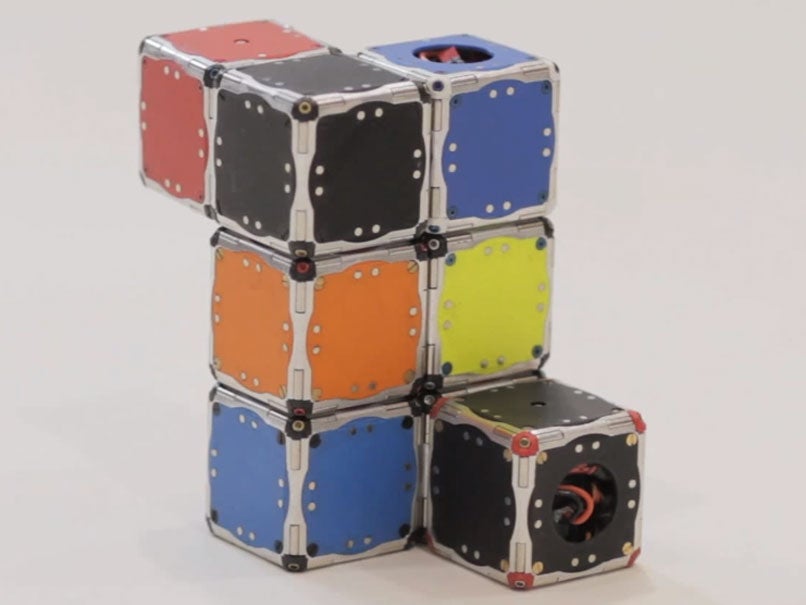Video: Self-assembling robots cubes jump and snap together
Palm-sized cubes use flywheels and magnets to snap together with future applications including emergency repairs and configurable furniture

Scientists from the Massachusetts Institute of Technology (MIT) have unveiled a new type of cube-shaped robot that is capable of self-assembly without the use of external mechanisms.
“They’re able to climb over and around one another, leap through the air, roll across the ground, and even move while suspended upside down from metallic surfaces,” reads a press release accompanying the announcement.
The robots have been dubbed M-Blocks and use an internal flywheel to move about. These rotating devices reach speeds of up to 20,000 revolutions per minute; when a brake is applied the force created by the rotation (the angular momentum) is transferred to the cube, propelling it as desired.
This unique mechanism even allows the cubes to jump – a feat that is not easy for robots of any size.
Magnets are the other key factor for the M-Block’s amazing abilities. These are embedded in the faces and corners of each cube, allowing the blocks to click into position, and line up with their neighbours.
Although self-assembling robots are still in their infancy there is a multitude of theoretical applications for the project - even at its current scale. The researchers suggest that it could be used to create temporary bridges in an emergency, quickly raise scaffolding for building projects, or even create reconfigurable furniture.
“We want hundreds of cubes, scattered randomly across the floor, to be able to identify each other, coalesce, and autonomously transform into a chair, or a ladder, or a desk, on demand,” says John Romanishin, a research scientist in MIT’s Computer Science and Artificial Intelligence Laboratory (CSAIL).
(For more information on the M-Blocks, head over to MIT’s site.)
Subscribe to Independent Premium to bookmark this article
Want to bookmark your favourite articles and stories to read or reference later? Start your Independent Premium subscription today.

Join our commenting forum
Join thought-provoking conversations, follow other Independent readers and see their replies